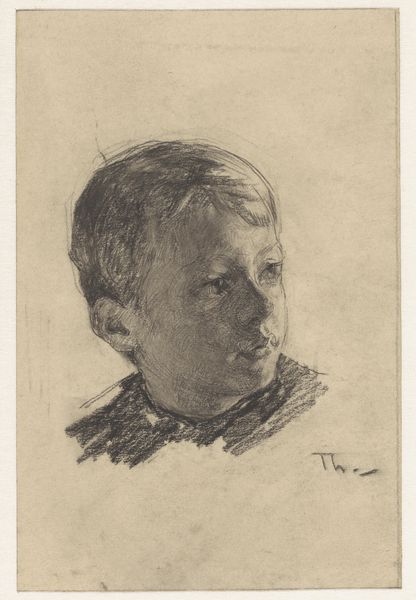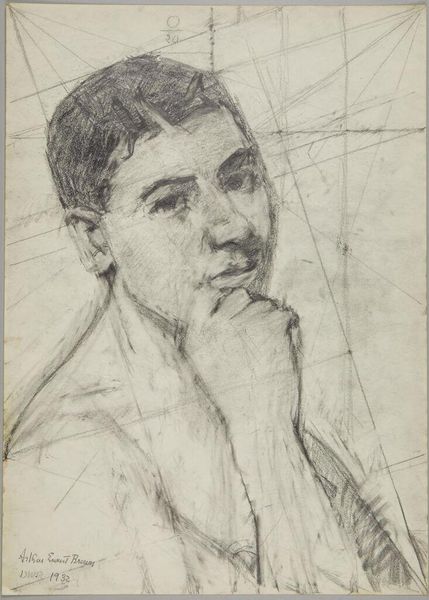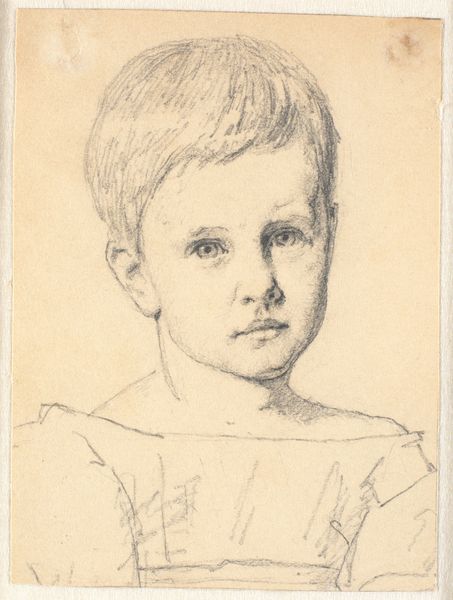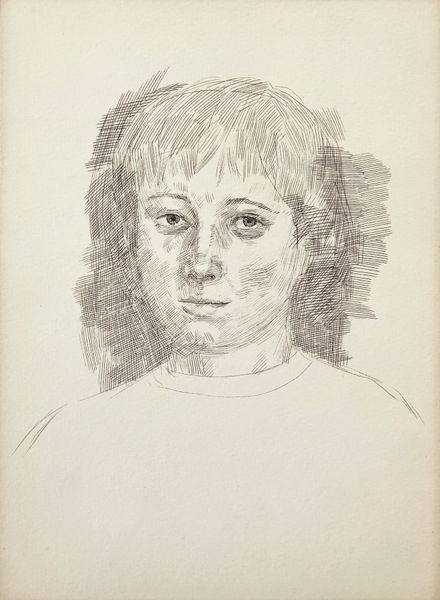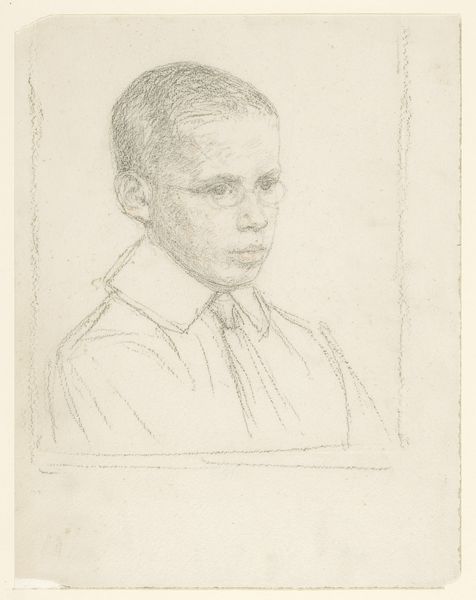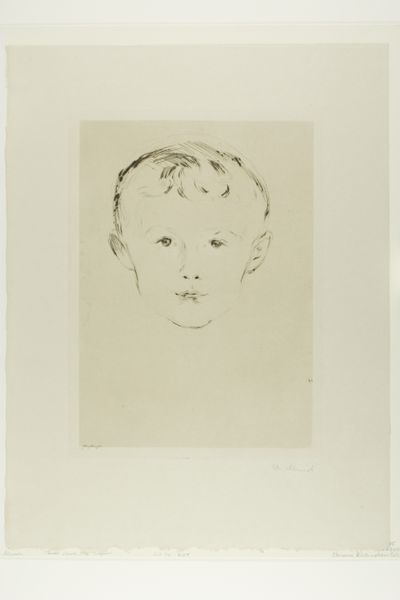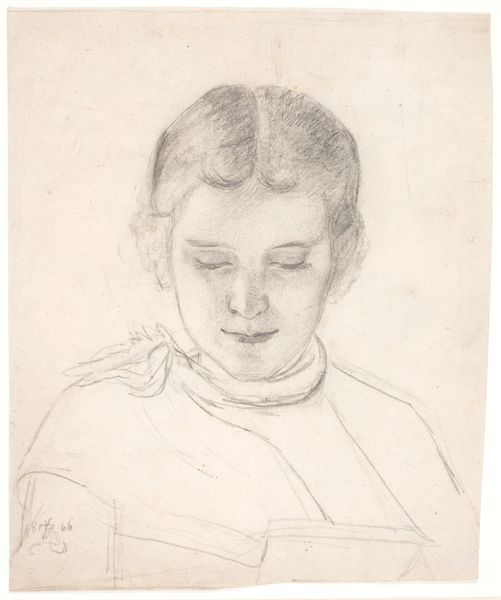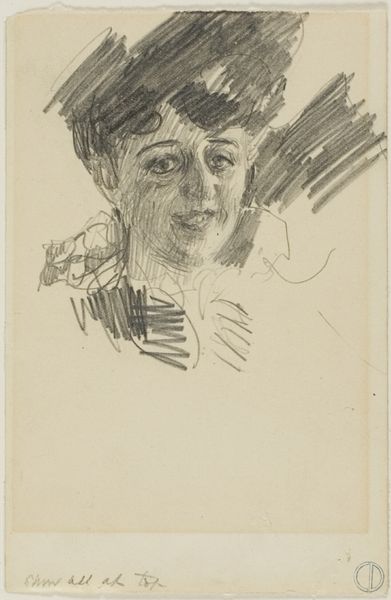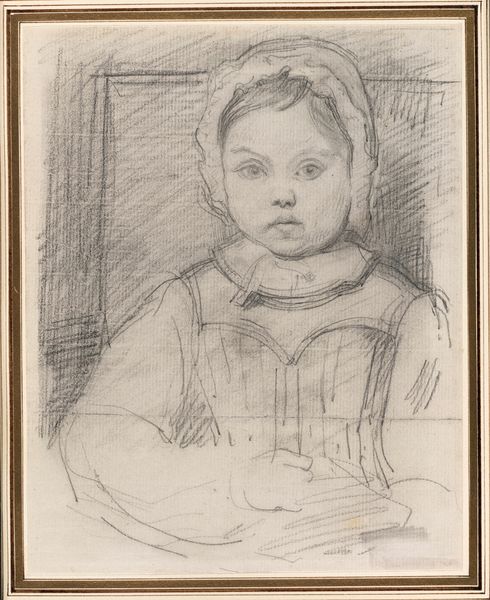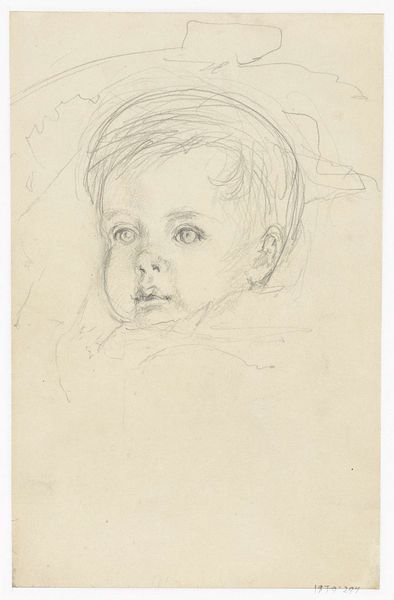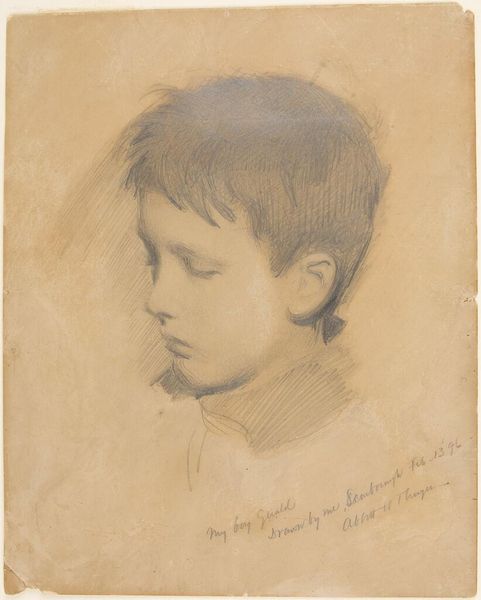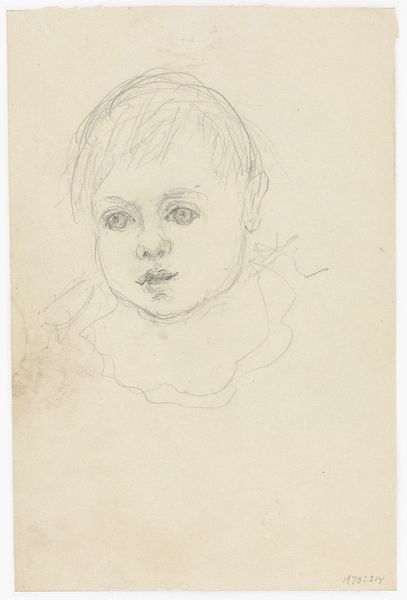
drawing, pencil
#
portrait
#
pencil drawn
#
drawing
#
pencil sketch
#
pencil drawing
#
pencil
#
realism
Dimensions: height 447 mm, width 312 mm
Copyright: Rijks Museum: Open Domain
Editor: This is Ferdinand Oldewelt’s "Portrait of the Artist's Son," created between 1904 and 1907 using pencil. It's a lovely sketch. I’m really struck by the boy's gaze – it's so direct, but also kind of melancholic. What do you see in this piece? Curator: The gaze, yes. The eyes are windows, but here, the slightly downcast expression and soft lines create a potent ambiguity. This piece evokes not just the individual, but also archetypes of childhood innocence marked by an emerging awareness. Editor: Archetypes? Could you elaborate? Curator: Consider the medium. Pencil, simple and direct, evokes childhood itself—the very tools of early learning. The slight blurring of the lines— intentional, perhaps, or born of the sketch's speed—speaks to the ephemeral nature of memory, particularly the artist's memory of his son at that age. Is there also something in the slope of his shoulders that may evoke burdens? Editor: Burdens? He looks relatively carefree. Curator: Or perhaps burdens not yet fully understood. We see childhood in layers, each line echoing a potential narrative: growth, constraint, perhaps the unacknowledged expectations even loving parents project. Even in the seeming realism of the sketch there is something more that reminds us that there's no universal child, but we can recognize elements and symbols across various stories and eras. Editor: So, you're saying that even in something as straightforward as a portrait, there's a resonance beyond just the individual? Curator: Precisely. The power of visual language is its ability to compress layers of meaning. Editor: That gives me a lot to consider. It’s a simple sketch, but also seems quite complex. Curator: Indeed. A powerful demonstration of how an image acts as more than a reflection. It carries meaning with us through time.
Comments
No comments
Be the first to comment and join the conversation on the ultimate creative platform.
